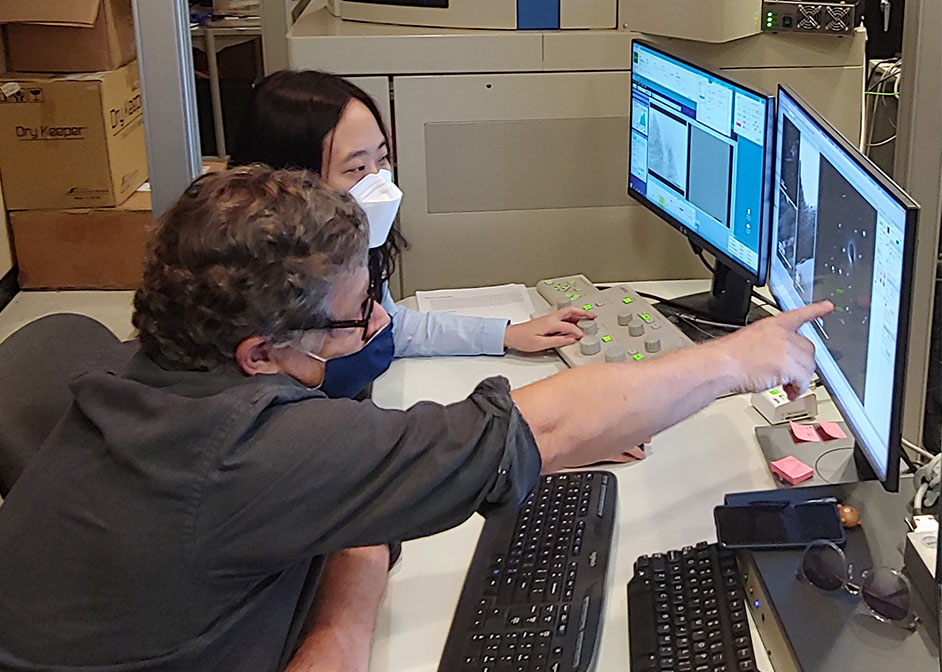EAS Research Scientist Jangmi Han Involved in Large Team Collaboration and Publication
The samples from carbonaceous asteroid Ryugu were returned to Earth by the Asteroid Explorer Hayabusa2 on December 6, 2020. These samples offer an unprecedented opportunity to explore the diversity of primordial solar system materials and to advance scientists’ understanding of the birth of our solar system, and importantly, the origin of water and organic matter.

Seventeen Ryugu samples of 1-8 mm in size were analyzed by the “Stone Analysis Team,” one of six Hayabusa2 Initial Analysis Teams led by Prof. Tomoki Nakamura at the Graduate School of Science, Tohoku University. The results of sample analysis and computer modeling were published in the September 23 issue of Science.
Dr. Jangmi Han, a research scientist at the University of Houston’s Department of Earth and Atmospheric Sciences, was a Hayabusa2 initial analysis team member and collaborated on microanalysis of Ryugu particles with Dr. Mike Zolensky at NASA Johnson Space Center. Zolensky was the deputy leader of the Stone Analysis Team. Han and Zolensky were part of a large team of authors involved in the Science paper.
Han used focused ion beam technique and transmission electron microscopy (TEM) to characterize the mineralogy and chemistry of Ryugu particles at the nanometer scale and to constrain the conditions of aqueous alteration processes on the parent asteroid of Ryugu in the early solar system. In particular, her analysis focused on the structure and chemical compositions of Fe-Ni sulfides, which are an indicator of temperatures at which aqueous alteration proceeded to form sulfides.
The TEM results indicated that the Ryugu samples can be classed as CI chondrites, a representative material for bulk solar abundances, and the parent asteroid of Ryugu experienced aqueous alteration at ~25°C.
Han continues to collaborate with Zolensky for studies of Ryugu particles to search for possible fluid inclusions completely encapsulated in sulfide and carbonate grains and measure their compositions using Time-of-Flight Secondary Ion Mass Spectrometry. This study will examine the evolution of aqueous fluids on the parent asteroid of Ryugu.